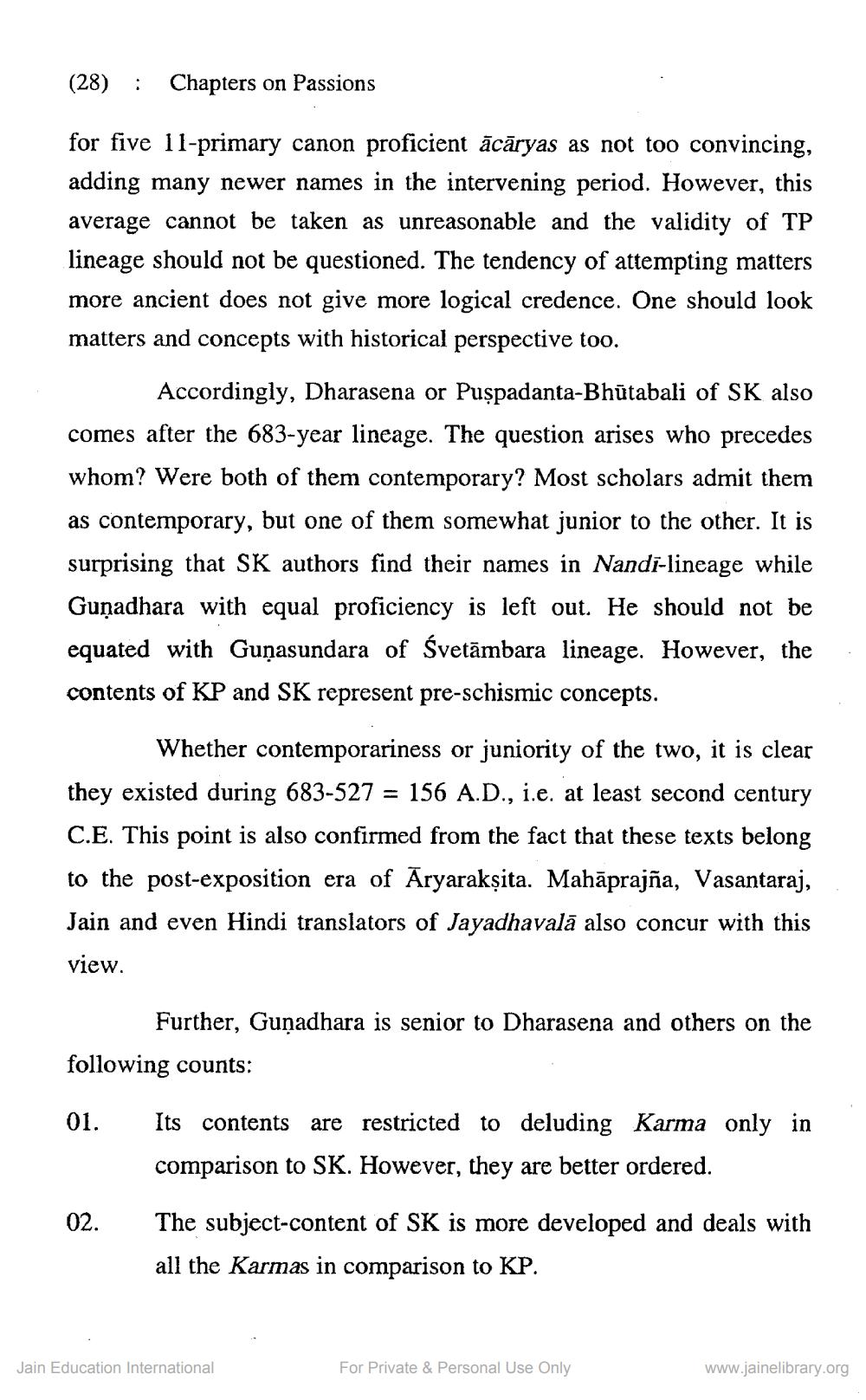________________
(28) ·
Chapters on Passions
for five 11-primary canon proficient ācāryas as not too convincing, adding many newer names in the intervening period. However, this average cannot be taken as unreasonable and the validity of TP lineage should not be questioned. The tendency of attempting matters more ancient does not give more logical credence. One should look matters and concepts with historical perspective too.
Accordingly, Dharasena or Puşpadanta-Bhūtabali of SK also comes after the 683-year lineage. The question arises who precedes whom? Were both of them contemporary? Most scholars admit them as contemporary, but one of them somewhat junior to the other. It is surprising that SK authors find their names in Nandi-lineage while Guņadhara with equal proficiency is left out. He should not be equated with Guņasundara of Śvetāmbara lineage. However, the contents of KP and SK represent pre-schismic concepts.
Whether contemporariness or juniority of the two, it is clear they existed during 683-527 = 156 A.D., i.e. at least second century C.E. This point is also confirmed from the fact that these texts belong to the post-exposition era of Aryarakṣita. Mahāprajña, Vasantaraj, Jain and even Hindi translators of Jayadhavalā also concur with this view.
Further, Guņadhara is senior to Dharasena and others on the following counts:
01.
Its contents are restricted to deluding Karma only in comparison to SK. However, they are better ordered.
The subject-content of SK is more developed and deals with all the Karmas in comparison to KP.
Jain Education International
For Private & Personal Use Only
www.jainelibrary.org




